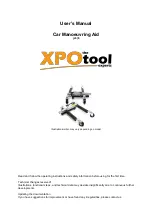
OVERVIEW
The Dixie II+ is a fully analogue triangle-core oscillator capable of generating five different
waveforms plus a square wave sub-oscillator.
Front Panel
Controls
[1]
OCTAVE
- This 8-position switch is used to
set the coarse tuning of the oscillator. Each
position shifts the tuning by one octave.
Fine adjustment can be made using the
FINE
knob. Note that when in LFO and with
the
FINE
knob turned up the oscillator may
hit the upper limits of the LFO frequency
range when the switch is in the higher
octave settings.
[2]
EXP/LIN
- This switch selects the mode of
the
FM1
input between linear and
exponential response.
[3]
FINE
- When in VCO mode this knob
functions as a fine adjustment for the tuning
frequency. The range is approximately +/- 6
semitones from the centre position. When
the oscillator is in LFO mode the range of
the knob is much higher, approximate +/- 7
octaves.
[4]
VCO/LFO
- This switch switches the Dixie
II+ between VCO and LFO mode. When in
VCO mode the oscillator operates at audio
rates with frequencies between 20 Hz up to
almost 60 kHz. When in LFO mode the it
can achieve cycles from several minutes in
length up to low audio rates of around 1
kHz.
[5]
FM1 Attenuator
- Attenuator for the FM1 input.
[6]
PWM Attenuator
- Attenuator for the PWM input.
Dixie II+ Manual
5


























